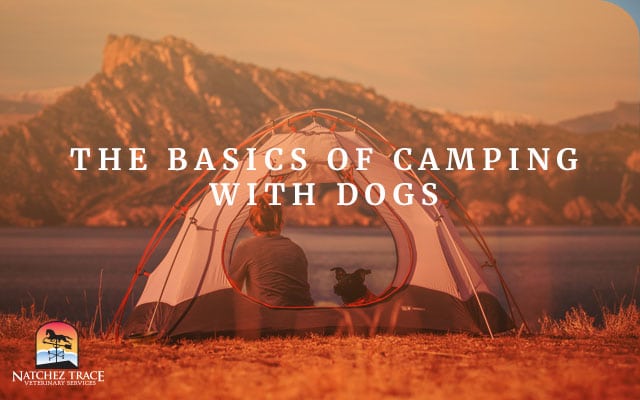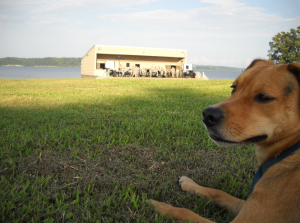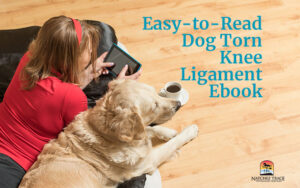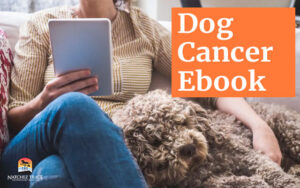Advanced preparation ensures a tail-wagging good time when you take your dog camping.
Camping is a fun family activity and can be even more rewarding if you include the family dog. Most dogs love being outside and just like you and me, a nature getaway can be just what they need to stave off boredom and relieve stress. Taking your dog camping could be a great opportunity to bond with a man’s best friend. But before you set out for the woods, take some of these tips for success when you take your dog camping.
Where Are You Going?
Choose the right camping spot for the activities you want to do and the experiences you want to have, but that are also dog-friendly. Don’t forget to call ahead and make sure dogs are welcome at the campground, park, or wilderness area you’re thinking of visiting. More and more areas welcome well-behaved, controlled pets, but don’t take it for granted. Find out what all the rules are for your pup, such as:
- Are dogs allowed?
- Are there any areas or trails where dogs are prohibited?
- Is there a limit on the number of dogs allowed at a site?
- Are leashes required?
- Do the campsites have water readily available?
- What other rules should I know about?
Before You Leave Home
First, you’ll want to have your dog checked over by your vet to make sure she is in good physical health and that all of her shots are up-to-date. Take copies of your dog’s health and vaccination records with you on the trip. If you’re traveling out of the United States with your dog, you’ll need documentation of all vaccinations. Apply flea and tick repellant a few days before the trip and check that she is current with her heartworm medication
If your dog is basically sedentary or doesn’t get out much, you may want to get her in shape by taking her on some hikes. This will also help her get used to being outside and surrounded by nature.
Make sure your dog has an I.D. tag with your current information in case she gets away from you. It is best to have whichever cell phone you’ll have with you on the trip printed on the tag. Think about getting your dog microchipped and be sure to register the chip. Even with a chip, an I.D. tag is a must.
Packing Stuff for Your Dog Camping Trip
Dogs can be a lot like kids when you’re camping. Nature is fun and exciting, but downtime around the campsite can be boring to dogs with a lot of energy. Bring some of their chew toys, balls, a frisbee, etc. You need to think about what will make your dogs happy campers too!
If the site you are heading to does not have drinking water readily available be sure to bring plenty from home. Dogs should eat the same food at camp that they eat at home. Bring enough food and snacks to last the whole trip plus an extra day – just in case.
Don’t forget your dog’s first aid kit. This kit should include all the normal items: bandages, antiseptic, etc., plus a tick remover, tweezers, and sunscreen. When choosing sunscreen for your dog, pick one that is appropriate for children as it will be milder and safe for your pet. Never use sunscreen with zinc oxide – this is poisonous to dogs. You’ll apply sunscreen to any exposed skin, like bellies and noses.
Bring a brush too. If your dog gets dirty or muddy, let it dry completely then simply brush it off. Don’t forget the poop bags! Always clean up after your dog at camp and properly dispose of the waste.
Where Will Your Dog Sleep?
If you are tent camping, you’ll most likely want your dog in the tent with you. Make sure you have a tent that is big enough to accommodate people and dogs comfortably. Leaving your dog outside the tent at night is not a good idea. This leaves her vulnerable to wild animals as well as the elements. She may also run off in the night after wildlife or if she gets spooked.
The safest place for your dog to sleep is in the tent with you. Bring their bedding or a blanket that is just theirs. Some dogs may want to crawl into your sleeping bag with you – so be prepared for that by bringing an oversize sleeping bag if possible.
Practice being in a tent ahead of time. Set up your tent in the yard and let your dog get used to it. Sleep in it out there one night and see how your dog reacts – does she sit up all night nervous, try to get into your sleeping bag, bark or whine, etc. This will tell you a lot about what to expect when you take your dog camping.
At Camp
When you get to camp, check in with the park ranger or camp manager. Let them know you have your dog or dogs with you. You could also inquire about local veterinary services or the closest vet hospital.
Pick a shady site. Keep an eye on your dog while you set up camp. They will most likely be very excited as soon as they get out of the car and want to run around and smell everything. Taking them for a walk around the campground first thing may help to calm them down a bit and get them used to these new surroundings.
Visit your campsite neighbors, and let them know that you have dogs with you. Be a good camp neighbor by keeping your dog under control and out of other campsites. Keeping your dogs occupied at your site will help stop them from wanting to wander.
Never leave your dogs unattended at your campsite. Don’t lock them in your car or tie them to a tree. At camp, where you go, your dogs go. Take them with you. If you don’t think you can do that or want to engage in activities at camp that you cannot take your dog to, then don’t take your dog to camp.
Other Considerations
Before you decide to take your dog camping, think about the following:
- Physical limitations – state of your dog’s health, age, temperament, ailments.
- Weather – how does your dog do in the heat? How will you keep your dog cool? What about the cold? How will you keep your dog warm?
- Backpacking – if you’re packing in with your dog, can you carry all of your supplies and theirs? Can they carry packs – don’t assume they will! What will you do if your dog gets hurt in the backcountry? Have a plan and be prepared for the unexpected.
Camping with dogs is a lot of fun, and another great way to strengthen the bond you have with them. Remember that preparation will help ensure a safe and happy trip for all of you!
Research and writing by Joyce Dierschke








